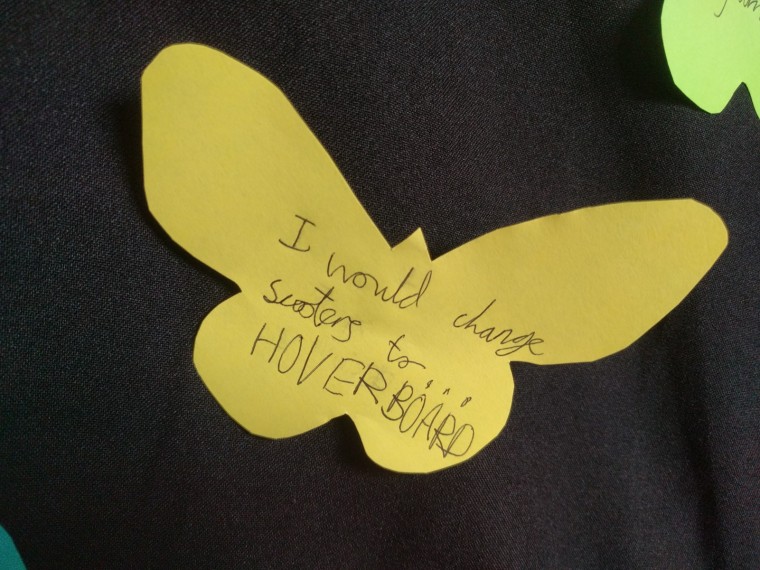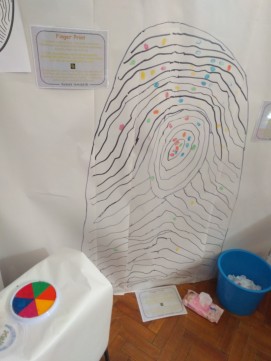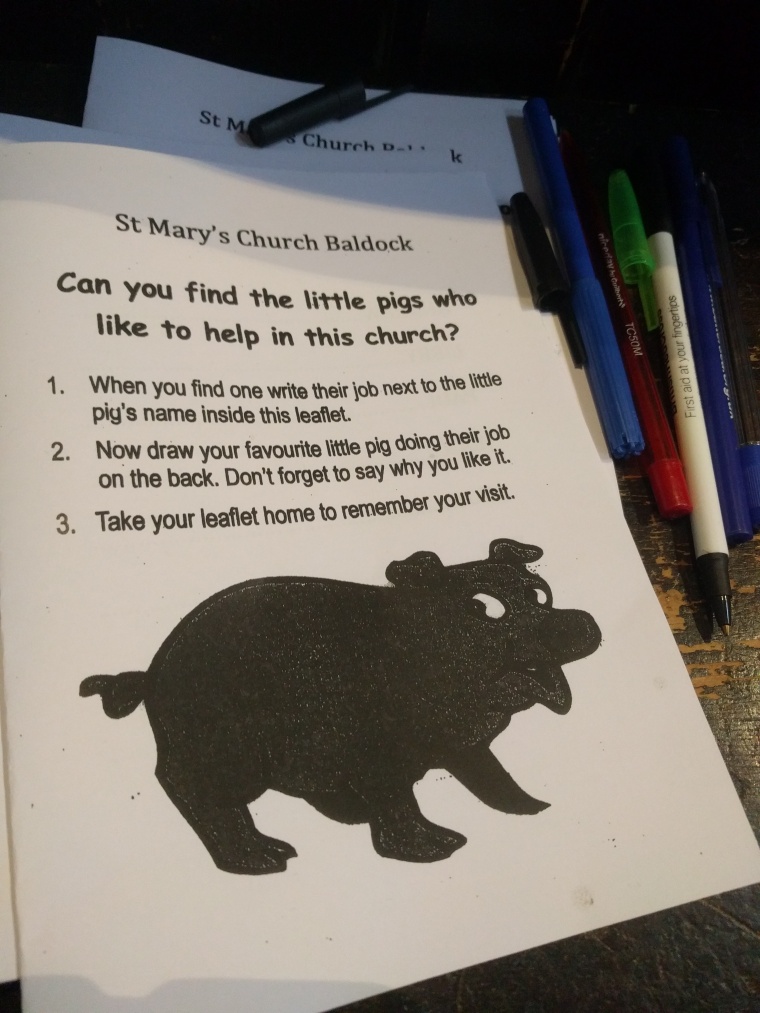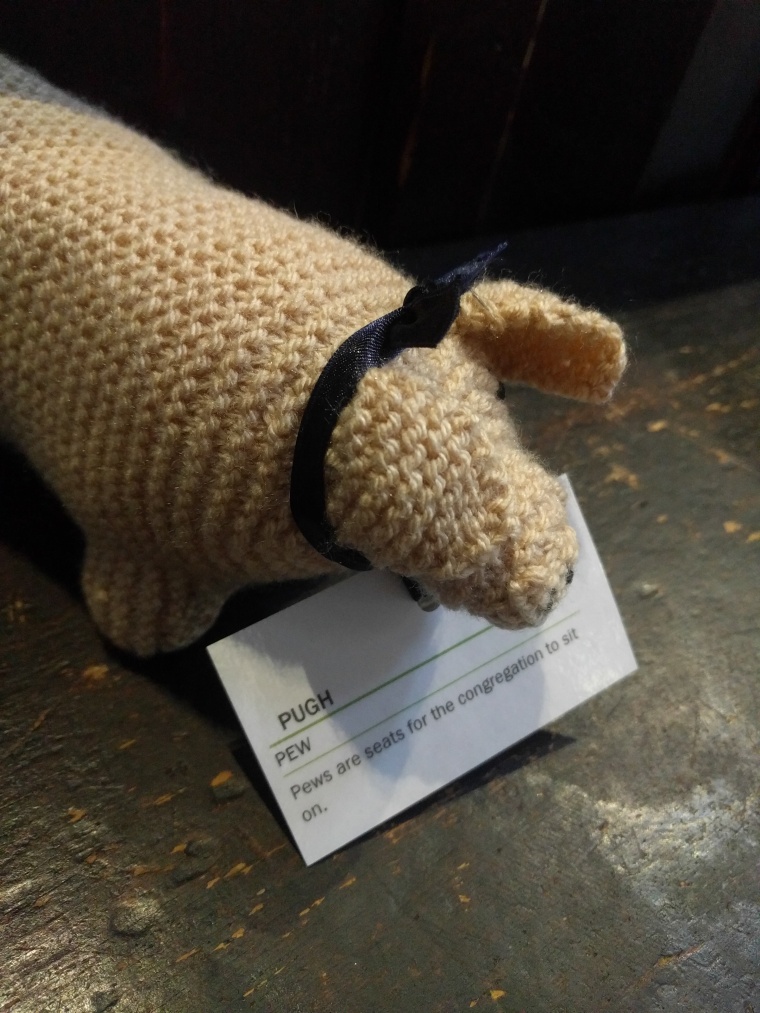Jane Hatton, one of the chaplains at the Lister Hospital, has lived in Knebworth for over thirty years. Serving on the board of governors of the local school – which isn’t a CoE school – and getting to know the staff, she earned the trust of the school leadership over time, and eventually felt she was able to suggest having a prayer space in the school.
In discussions with the school, it was decided that the space would be called “Soul Space,” as some people felt the word “prayer” carried specific associations. The space was designed to include information about what Christians believe about God, but not to proscribe these beliefs, and to allow children to participate fully without having to share a Christian view of God or the world.
For a short video about last year’s Soul Space, click here.
Jane told me she doesn’t feel like a natural with children’s work, so she surrounded herself with volunteers who felt more at home with kids – they came from St Martins church, Trinity Church (both in Knebworth) and from Bridge Builders, as well as chaplaincy volunteers and retired clergy.
Through a few planning meetings (one of which I was lucky enough to attend), a few themes were decided on, and activities from Prayer Spaces in Schools were chosen. “We wanted a mix of activities looking inward (to ourselves), looking outward (to others), and looking upward (to God),” Jane said. The volunteers attended the planning meetings and contributed lots of ideas.
One of the “looking upward” activities invited children to imagine they were in charge of the world. What would they change? What would stay the same? What questions do you have for God? Write them as a tweet.

They were then invited to think about transformation, and change, and how the world should be transformed. A butterfly image was used to represent this. Click here for the resources for this activity.
 The prayer space was scheduled to be open for two days in late July, so some activities focused on looking ahead to the next school year, and, for the Year 6 pupils, the transition to secondary school.
The prayer space was scheduled to be open for two days in late July, so some activities focused on looking ahead to the next school year, and, for the Year 6 pupils, the transition to secondary school.

The Calm Zone included space to write hopes and fears about the future, as well as Calm Jars (click here for more) and Bubble Tubes (click here) to help pupils relax.

Pipe cleaner people, next to photos of every class in the school, were used to help children reflect on the school year that is ending, and pray for those who have helped them. For more on Pipe Cleaner People, click here.
Volunteers chose a particular corner that was “theirs” – they introduced children to the activity there, and were on hand to support and talk if needed. Two volunteers were “spare” – i.e., not assigned to a particular corner. Their job was to manage the timings and to jump in and help if needed.
For the running of the space itself, the plan was:
- Each class was split into two groups of approximately 10-15 pupils.
- Each group has half an hour to explore the space, while the other half does classroom-based activities – in this case, they were connected with one of the school’s values.
- Children can choose which prayer activities they want to do, but there should be no more than 5 children in each area at one time. So if an area is full, you pick another one and come back later.
- At the end of the half hour, children are invited to fill in a feedback sheet to say what they liked and didn’t like. This feedback is taken seriously in planning the next Soul Space.
Soul Space is now in its second year, and I had the chance to visit it last week.



The powerful Refugee Rucksacks activity is an age-appropriate way to help children learn about and pray for refugees. It invited children to think about what they would bring if they had to leave their home because of war. It works well with this photo essay of refugees sharing what they brought with them, what they’ve lost along the way, and what they are hoping for in their new lives.
The final activity was Finger Print. It explained that Christians believe in a God who made each of us and loves each of us, and invited children to add their unique fingerprint to a large fabric print on the wall. There were also two prayer boxes available at this station.
The children’s feedback sheets were done in a way that new/non-readers could participate in, with a bit of adult help. The list of stations can help you find those activities on the Prayer Spaces for Schools website (you have to register to download the resources, but registration is free).

Lessons:
- Relationship matters. Jane’s positive relationship with the school, over a period of time, made this possible.
- Helpers matter. Jane couldn’t have done this on her own. She assembled a team from the whole community.
- Choose a few things and do them well. There were four corners to Soul Space, each with a clear focus. They didn’t try to be all things to all people, and get overwhelmed.
- Have a plan for safeguarding. Obviously all volunteers need DBS checks, and the school needs to be given their names and their DBS certificates. However, in addition to that, children may reveal things in prayer that need to be passed along to the right adults in school. Check the prayers left after each class, so you know if a potential issue has been raised, which class it comes from. The teacher can probably identify the handwriting and pass it along to the safeguarding officer.
- Get feedback. The feedback forms can help guide future planning, can show the governors the impact the space has on the children, and can remind you that all your hard work was worth it!










 Today’s post is written by the Revd. Lucy Davis, from
Today’s post is written by the Revd. Lucy Davis, from  And therein was the first turning, a turning of vocabulary. Parents approached us asking for Christenings, and we would persist in talking about Baptism – on our website, on the phone, in our literature. To what end? Yes, to the end of being theologically and ecumenically correct, but also to the end of immediately excluding, of making families feel as though they were asking for the wrong thing, on the back foot and inadequate in the face of our secret Church language. So there was the first change. If a family asks for a Christening, we now talk about a Christening. On the phone, by e mail, on our website. Christening it is. I have climbed down from my high horse. At the service, we unpack these words a bit, talking about the oil of Chrism as the priest and parents mark the baby’s head. Suggesting we dunk the baby in the font like hand washing some clothes, in keeping the original meaning of the word Baptism (this one usually met with a little light laughter).
And therein was the first turning, a turning of vocabulary. Parents approached us asking for Christenings, and we would persist in talking about Baptism – on our website, on the phone, in our literature. To what end? Yes, to the end of being theologically and ecumenically correct, but also to the end of immediately excluding, of making families feel as though they were asking for the wrong thing, on the back foot and inadequate in the face of our secret Church language. So there was the first change. If a family asks for a Christening, we now talk about a Christening. On the phone, by e mail, on our website. Christening it is. I have climbed down from my high horse. At the service, we unpack these words a bit, talking about the oil of Chrism as the priest and parents mark the baby’s head. Suggesting we dunk the baby in the font like hand washing some clothes, in keeping the original meaning of the word Baptism (this one usually met with a little light laughter).







 After Sandra Millar’s wonderful day with us last November, I resolved to put a few of the tips from the Christenings Project into practice in my own church. We have a large cohort of children in the 7 – 14 age range, but very few babies and toddlers. This has left our under-5s volunteers demoralised, and, of course, made us feel we’re missing out on the joyful presence of toddlers, and on the chance to provide a community and a place of meaning and hope for them and their parents.
After Sandra Millar’s wonderful day with us last November, I resolved to put a few of the tips from the Christenings Project into practice in my own church. We have a large cohort of children in the 7 – 14 age range, but very few babies and toddlers. This has left our under-5s volunteers demoralised, and, of course, made us feel we’re missing out on the joyful presence of toddlers, and on the chance to provide a community and a place of meaning and hope for them and their parents. Each email was simple and to the point – we have a toddler-friendly event coming up. Join us! We’d love to see you!
Each email was simple and to the point – we have a toddler-friendly event coming up. Join us! We’d love to see you!